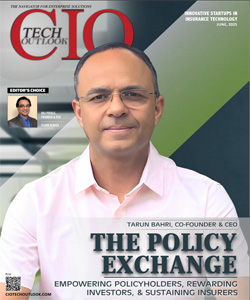Get ready for the Digital Boardroom
Robert Jan van der Horst, IT Director & M. Kumaresan, IT Head (BU-AMEA), DSM Sinochem Pharmaceuticals
 1. The Bigger Picture
1. The Bigger Picture
Companies that set themselves targets to become fully paperless need to automate all internal & external reporting. And all the relevant data end up in the “Digital Boardroom” which enables companies a total real-time overview of business performance across the different processes throughout the organisation.
Systems and processes have to be made ready to support these goals, not only the structured data (ERP, CRM, SRM and LIMS) but also the non-structured data like Document-, Training- or Issue Management.
And in order to obtain the reports in a logical and meaningful way, the processes must run flawless. Expectations have to be clearly defined at all levels which includes Top management in order to have clarity on what to deliver and with what frequency.
2. Data
Data in systems exist of:
• Configuration Data
• Master Data
• Meta Data
• Transactional Data
• Reporting Data
Configuration Data and Master Data are more governing items. In fact they steer the other data next to the implicit functioning of the application. But if you want your data “in order”, you need to work on all 5 items. So it starts with proper understanding on how systems exactly work. But the real journey starts with below challenges:
• Can the data which is generated by the system in the form of transactional data serve as information delivery? Did you apply consistent definitions for the same thing?
• Is the data complete and aren’t we doing some transactions outside the system?
• Is there a delay in data cleansing, harmonization and update?
In general, it is imperative that data needs continuous attention from all angles:
• Policy wise
• Implementation wise
• Process wise
• Update wise
3. Process optimisation
Even with a strong focus on systems and tooling, the best system fails when the processes are inappropriately followed. Ultimately the success of the company is in the processes (differentiator) where systems and data are the enablers.
Therefore Process Optimisation is the key activity of each IT department, in close cooperation with the business functions and anchored with the appropriate level of governance (see below).
Process Optimisation is ideally part of Operational Excellence or Continuous Improvement Programs. Process Optimisation needs a multi-disciplinary approach since it is driven by various items:
• Standardisation: Harmonisation of the way of working across all units in the company enables process optimisation. Apply when possible and logical a One Company, One System, One Way of Working strategy.
• Training & Discipline: Key and End Users need to be continuously trained so that the implemented processes are understood and also followed.
• Process Monitoring: Monitoring the actually executed processes can give insight to what extend the desired processes are followed and triggers further improvements.
• Focus on end-to-end processes. Process optimisation is best served if an entire process is fully done in the intended system without shortcuts.
• Automate wherever possible. Line of thinking should be automate wherever possible and going paperless should be the ultimate goal.
• Reporting and KPI’s: Ideally Management should have a clear view on KPI’s and on the frequency of reporting these KPI’s.
• Persistence and willingness to walk towards last mile: Continuous improvement is, in fact, the only option.
4. Governance
IT Governance ensures the effective and efficient use of IT which enables an organisation to achieve its goals (Gartner). It is the prime responsibility of CIO. Nevertheless the Business Processes Governance is primarily a responsibility of the Business Process Owner (BPO), usually a C-level staff member. Effective governance can be obtained when the BPO is able to take this role (including the accompanying ownership), understands the processes and has the ambition to improve it.
5. How to get ready for the Digital Boardroom?
In order to get ready it is highly recommended to have the relevant data available in one repository. More > 1 repository will work as well but it will complicate the case. Take the current Management Reporting as a given and have this populated in the Digital Boardroom. Focus not immediately on all items, take a logical subset and scale up thereafter. Have governance in place for process optimization so that detected flaws can be addressed efficiently and effectively. Select carefully the audience of the pilot group. It helps a lot if the audience is convinced on the desired end-state. Apply the approach of the Deming cycle: Plan, Do, Monitor and Act:
• Establish governance
• Define and run Data, Systems and Processes
• Check/Monitor, report (KPIs)
• Optimize / Improve
6. Conclusions
Digital lifestyle was a dream 5-10 years ago but now it is becoming a reality. With so many technological advances that constantly keep evolving at hand, the way business is steered also changes. Organisations that have worked on digital integration will win from the organisations that continue working with scattered Excel files. Are you a laggard or an early adopter? The DIGITAL BOARDROOM is just round the corner but is your organisation ready to embrace it?




